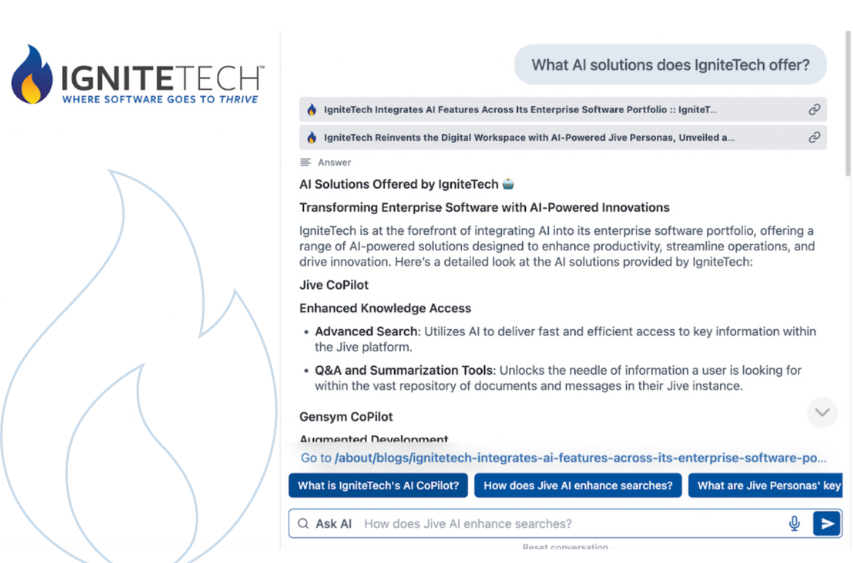Your sales teams have a hard time keeping up with everything they’ve got going on. They’re learning about your products and services — always honing their pitch — and juggling dozens of current client situations, potential client opportunities, and various contract negotiations and closing situations. In dealing with all of this internal information, at times, one loses track of the external information that also impacts your business. Keeping track of changes at major accounts is challenging; mergers, acquisitions, management changes, financial realities and all news and information that can impact your customers and your sales. Unfortunately more often than not, your salespeople learn about this information while on the phone with a customer who is explaining why they can’t do business with you this year.
Today’s B2B sales enablement leaders must consider all of these aspects of doing business and evaluate sales enablement practices in order to help sales teams achieve the desired goals.
Here are 5 Sales Enablement best practices that will help your sales team close more deals.
1. Training
Once your sales managers have hired the right sales team, the reps need to be trained in order to better understand your product and industry so they may be effective in helping your company reach its goals.
In addition to product and industry knowledge, the team should be aware of relevant marketing resources that can be used throughout the customer journey. Share whitepapers, blogs, videos and all other content being produced by the marketing team that will help support all stages of the sales cycle. Be sure to let your marketing team know what’s working well and what could use some improvement.
As a sales enablement leader you need to ensure this training process is well-defined as the future of your business depends on it.
2. Industry Pulse Checks
A sales rep doesn’t want to be taken by surprise. Instead sales teams should be anticipating and altering their approach ahead of time, to factor in new realities that affect their clients and prospects.
Those new realities — or even general economic conditions — can impact your forecast, as well. For example, If you sell to electric companies and operate in a vacuum, all you care about are the products, services, and scheduled interactions you’ve got with those companies. Each meeting that’s set up will be focused on building on the last; but if you’re not taking the pulse of the industry as a whole, you might not know that it has been a milder-than-normal summer, that revenues at electric companies have been impacted, that if you don’t alter your timelines accordingly, budgets may be slashed. Without insight, you cannot anticipate, cannot adjust your strategy, and cannot succeed.
3. Factor in New Realities
Understanding the ever-changing landscape helps you be better prepared. At the very least, sellers may walk into meetings unprepared. Think about it — if they’re unaware of the mild summer and how that’s impacting electric company budgets, they’ll walk into their next meeting expecting to talk about contract terms and instead be met with the bad news of slashed budgets. That impacts the seller’s forecast, the company’s forecast … and had the seller been aware, she could have come in with an alternative budget proposal, a modified approach that recognizes and respects the financial realities before the question is asked or the challenge posed. If your organization doesn’t know what the competition is doing, you may get the rug yanked out from under you … over and over again, until your loss analysis starts to catch up with the reality of your decrease in sales over the previous six months. And if your company isn’t trying to keep track of how the market — the industry — is changing and adjusting, you may miss out on key opportunities to advance a different strategy, pivot appropriately, and take the lead on key messaging changes.
4. Customer Alignment
Being aware of your customer’s business is not just good practice, It is something that customers expect. You should be understanding of your customer’s situation and not be pushing for a sale when, for example, your customer is going through restructuring or has had budget cuts. You need to be on the same page as your customer, to show that you understand them. Consistent awareness and insight are required for your sales team to be aligned with the customer. This will help your team structure their next conversation around the realities that impact a business on a day-to-day basis.
5. Technology
To be more effective, tools that enable discovery and curation of information to accelerate sales opportunities, help develop market strategies, facilitate lead generation campaigns and enable risk mitigation are required.
Our Business Insights tool, FirstRain does just that. It helps you better understand the industry and identify opportunities.
In July of 2019, our team undertook a detailed research project with our largest FirstRain user — a company with over 20,000 active users of FirstRain spread across the entire world. We conducted an NPS survey, asking for specific feedback on how they use the product, and held interviews with “super users” — those users whose activity in the product stood out above all others. And we learned not only about the power of awareness, but of the other ways in which FirstRain makes users successful.
Sales leaders at customer accounts turn to FirstRain to help them get up-to-speed on the latest news and information about the dozens of accounts the team manages. The advantage is that all of the information is in one place — a single web page or a single email — rather than forcing one to spend hours searching the web for breaking news about each individual account. While providing critical insights on your accounts, FirstRain also saves a tremendous amount of time. So awareness is obvious — of course a tool that’s designed to bring users the latest up-to-date information about specific company accounts, industries, and product lines will be a great awareness tool.
One of our customer’s Vice Presidents of Sales manages several Fortune 500 accounts, and his connections within those accounts are varied. In one case, he sells to the finance division. In another, his business is with a specific regional branch. As an established partner with these companies, he can expand his sales considerably within the organization, and uses the news and information he finds on FirstRain as reasons to call — reasons to strike up conversations with existing points of contact; reasons to ask for introductions; reasons to simply call new divisions or contacts within the company and introduce himself.
Sales Enablement Webinar Recording
For more insight to help craft a successful Sales Enablement strategy, we’ve put together best practices and use cases from a Fortune 50 technology company presented by our very own Senior Account Manager, Jesse Manning. Click the video below to get started.
As always, if you have any questions or would like to speak with us, please let us know.







